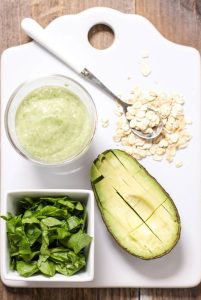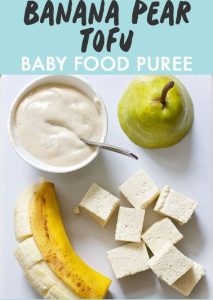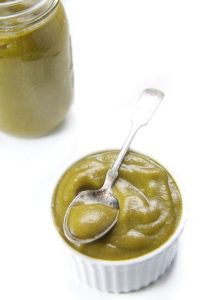Introducing your baby to solid foods is a thrilling and messy milestone! Vegetable purees are a great first food for many babies. They are packed with nutrients and can be a gentle introduction to new flavors and textures. This article explores the wonderful world of vegetable puree for babies and offers tips for making and serving them to your baby.
Important Note: Always consult your pediatrician before introducing solid foods to your baby. They can advise you on the best time to start and which foods to introduce first.
The Benefits of Vegetable Purees for Babies
Vegetable purees offer a variety of benefits for your baby’s growth and development:
Essential Nutrients of Vegetable Puree for Babies:
Vegetables are packed with essential vitamins, minerals, and fiber that are important for your baby’s growth and development.
Exposure to New Flavors:
Vegetable purees introduce your baby to a variety of flavors, helping them develop a taste for healthy foods.
Practice with Texture:
Purees help your baby learn to swallow and manipulate food in their mouth, which is a stepping stone to eating more solid foods.

Choosing Vegetables for your Baby’s Purees
When selecting vegetables for your baby’s purees, consider these factors:
-
Sweetness: Babies tend to prefer sweet flavors. Start with naturally sweet vegetables like carrots, sweet potatoes, and peas.
-
Mild Flavor: Choose vegetables with a mild flavor that is not too overwhelming for your baby’s sensitive palate.
-
Ripeness: Select ripe vegetables for the sweetest flavor and the best texture.
Homemade vs. Store-bought Vegetable Purees
You can choose to make your own vegetable purees at home or purchase them pre-made from the store. Here’s a breakdown of the pros and cons of each option:
-
Homemade Purees:
-
Pros: You control the ingredients and can ensure they are organic and free of added sugar or salt.
-
Cons: Making purees takes time and planning.
-
-
Store-bought Purees:
-
Pros: Convenient and readily available.
-
Cons: May contain added sugar or salt. Check the label carefully.
-

Creating Delicious Homemade Vegetable Puree for Babies
Here are some simple steps to follow for making delicious homemade vegetable purees for your baby:
-
Wash and Steam Vegetables: Wash and steam your chosen vegetables until tender. Steaming helps preserve nutrients.
-
Puree the Vegetables: Use a blender, food processor, or immersion blender to puree the steamed vegetables until smooth.
-
Adjust Consistency: Add a little water or breast milk to the puree to achieve a consistency that is easy for your baby to swallow.
-
Serve Immediately: Freshly made purees are best. You can store leftover puree in the refrigerator for up to 2 days or freeze it for longer storage.
Tips for Serving Vegetable puree for babies
Here are some tips for introducing vegetable purees to your baby in a positive way:
-
Start with Single Vegetables: Introduce new vegetables one at a time to identify any allergies.
-
Small Portions: Start with just a spoonful or two of puree at first.
-
Room Temperature: Serve the puree at room temperature.
-
Let Your Baby Take the Lead: Place a small amount of puree on a spoon and allow your baby to self-feed. This encourages exploration and reduces the risk of overfeeding.
-
Be Patient: It may take your baby a few tries to get used to the taste and texture of purees. Be patient and encouraging.

Adding Variety to Your Vegetable Puree for Babies
Once your baby is comfortable with single-vegetable purees, you can start to explore flavor combinations:
-
Mix and Match: Combine different vegetables to create new flavor combinations. For example, try sweet potato and carrot puree or peas and avocado puree.
-
Herbs and Spices: You can add a tiny amount of dried herbs or spices like thyme or cinnamon to introduce your baby to new flavors.
-
Fruits: Once your baby has tried a variety of vegetables, you can start to introduce fruits. Combine fruits and vegetables for a sweet and nutritious puree.
Introducing your baby to solid foods is a fun and rewarding experience. Vegetable purees are a great way to start your baby on a journey of healthy eating. By following these tips and using your creativity, you can create delicious and nutritious purees that your baby will enjoy.
Remember: The most important thing is to have fun and create a positive mealtime experience for your baby.

Beyond the Purees: Exploring Textures
As your baby gets accustomed to smooth purees, you can gradually introduce them to different textures:
-
Thicker Purees: Gradually thicken the consistency of your purees by adding less water or breast milk.
-
Mashed Vegetables: Once your baby tolerates thicker purees, you can mash cooked vegetables instead of pureeing them completely. This will leave some small lumps that help your baby develop their chewing skills.
-
Soft Finger Foods: Around 8-10 months, you can introduce soft finger foods like steamed broccoli florets, ripe banana slices, or avocado wedges. Gagging is a normal reflex at this stage, so supervise your baby closely during feeding.
Safety Tips for Feeding Your Baby
Here are some safety tips to remember when feeding your baby purees and other solid foods:
-
Always supervise your baby during mealtimes.
-
Cut food into small, age-appropriate pieces to prevent choking.
-
Do not force your baby to eat. Let them self-feed as much as possible.
-
Be aware of common allergens. Introduce new foods one at a time and watch for any allergic reactions.
-
Honey is not safe for babies under 1 year old.

The Importance of Talking to Your Pediatrician
Your pediatrician is a valuable resource for all your baby’s health needs, including nutrition. Don’t hesitate to talk to them about:
-
When to introduce solid foods to your baby
-
Which foods to introduce first
-
Creating a balanced diet for your baby
- Any concerns you might have about your baby’s eating habits
Conclusion: A Journey of Discovery
Introducing your baby to solid foods is a journey of discovery for both of you. Vegetable purees are a fantastic first step on this exciting path. By following these tips and creating a positive mealtime experience, you can help your baby develop a healthy relationship with food.
Remember: The most important thing is to be patient, observe your baby’s cues, and make mealtimes a fun and enjoyable experience.
